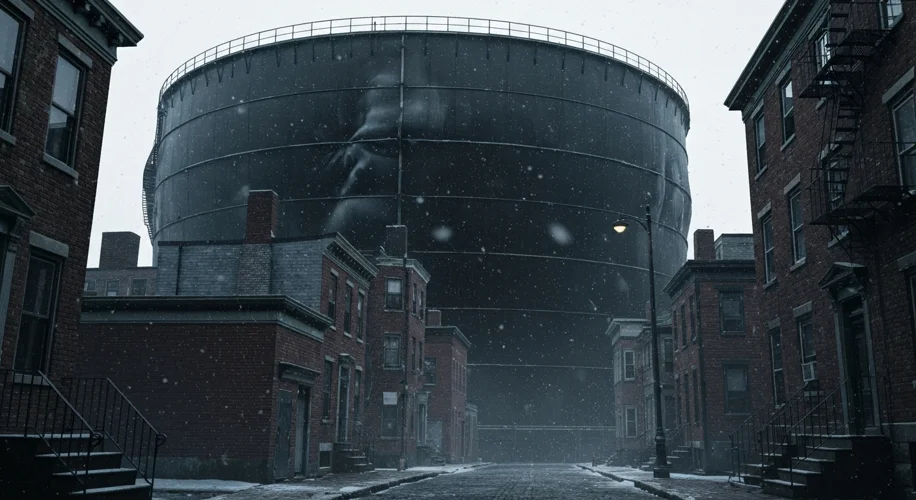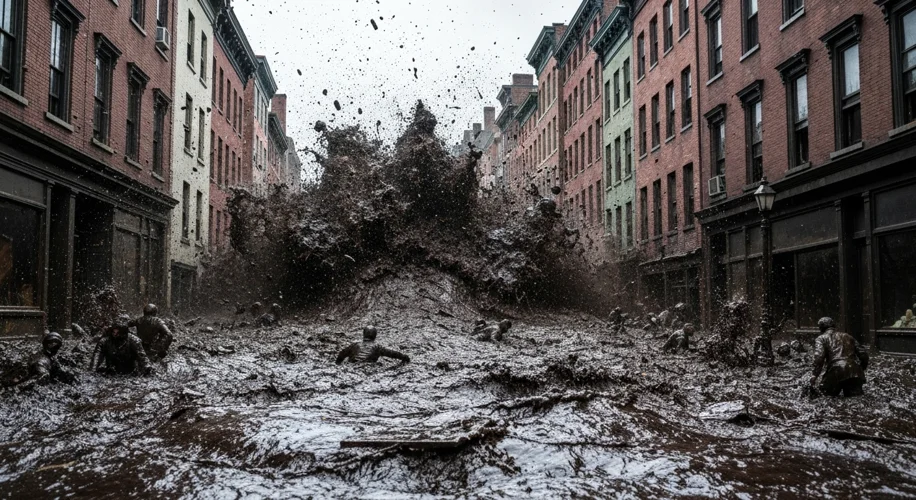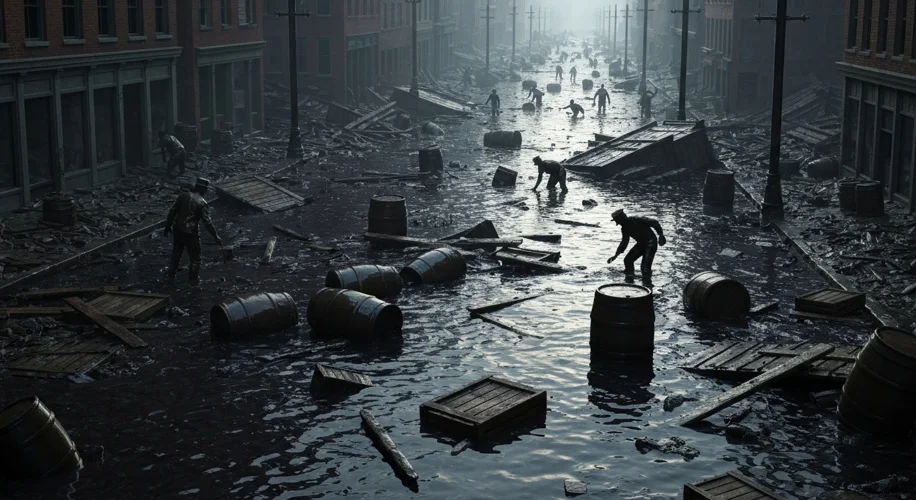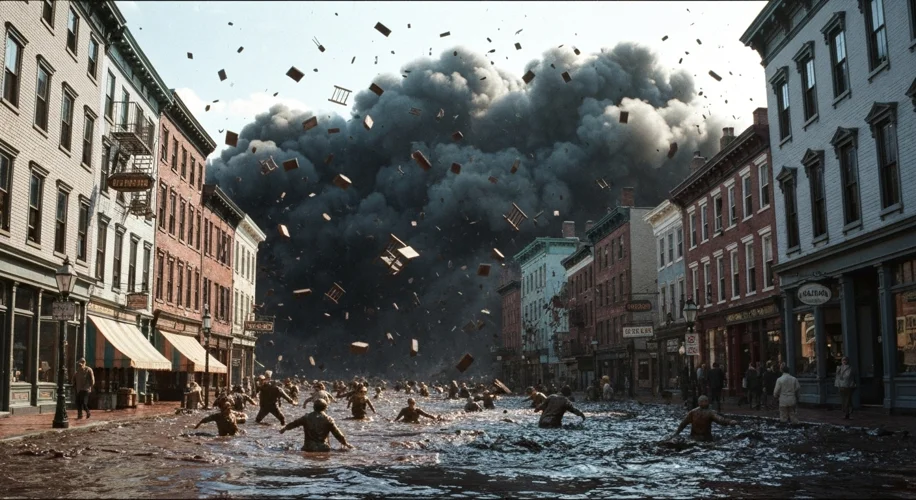The air in Boston’s North End on January 15, 1919, was crisp and cold, the kind of winter day that usually portends a quiet stillness. But beneath the veneer of normalcy, a monstrous force was building, a silent, unseen threat seething within a colossal metal tank.
A Sticky Situation Brewing
This wasn’t just any tank; it was an enormous, 50-foot-tall, 90-foot-diameter vessel, looming over the streets and homes of the densely populated North End. It belonged to the Purity Distilling Company and held over 2.3 million gallons of thick, dark molasses – a seemingly innocuous sweetener bound for industrial alcohol production, a vital commodity for munitions during the recent Great War.

The molasses itself had arrived in Boston just over a year prior, a viscous tide from the West Indies. But this particular batch had been languishing in the tank for an extended period. Whispers among locals spoke of the tank’s ominous groans and creaks, a soundtrack to the unsettling bulges that distorted its once-pristine cylindrical form. Some even claimed children would dare each other to lick molasses trickling from its riveted seams. A palpable unease, like the cloying sweetness of the molasses itself, permeated the neighborhood.
The Unleashed Deluge
Around 12:30 PM, the inevitable happened. With a deafening roar that swallowed the ambient city noise, the tank catastrophically failed. It wasn’t a slow leak; it was an explosion. Rivets burst like shrapnel, metal shrieked and tore, and a colossal wave of viscous molasses, estimated to be 25 feet high at its peak and moving at a terrifying speed of 35 miles per hour, surged through the narrow streets.
The sheer force of the wave was unimaginable. It snapped elevated railway tracks, swept away buildings, and crushed everything in its path. Horses, wagons, and people were engulfed, trapped in the sticky, suffocating tide. The molasses, still at a relatively warm temperature from fermentation, acted like a deadly quicksand, pulling victims down, making escape a near impossibility.

Eyewitness accounts paint a horrifying picture of the chaos and destruction. “A great wave of brown, sticky fluid came pouring down the street,” recounted one survivor, his voice trembling decades later. “It was a river of molasses, at least twenty feet high… My horse and truck were picked up and turned bottom-side up.” Another recollected the screams, the terror, the desperate struggle to stay afloat in a substance that clung with relentless tenacity.
The immediate aftermath was grim. Rescuers, wading through knee-deep molasses, battled to pull the injured and the dead from the sticky morass. The sweet, cloying smell of molasses, once a symbol of industry, now hung heavy in the air, a macabre perfume of disaster. It took days to clear the streets, a monumental task that involved shoveling tons of molasses, a sticky, laborious process that continued for weeks.
The Reckoning and the Legacy
The human cost was staggering. Twenty-one people lost their lives, and over 150 were injured. The economic toll was immense, with damages estimated to be in the millions of dollars, equivalent to tens of millions today. The Purity Distilling Company, a subsidiary of United States Industrial Alcohol (USIA), initially tried to blame anarchists for the disaster, a desperate attempt to deflect responsibility.
However, the ensuing court case, one of the longest and most complex in Massachusetts history, revealed a truth far more bitter than molasses. Evidence presented showed that the tank had been poorly constructed, hastily rushed into service without proper testing, and its metal had been weakened by fermentation. The company was found liable, and USIA paid out significant settlements to the victims and their families.

The Great Molasses Flood serves as a stark reminder of the potential consequences of corporate negligence and the unseen dangers lurking in industrial development. It’s a story etched not in textbooks of grand battles or political treaties, but in the sticky residue of a city’s memory, a testament to a disaster that was as bizarre as it was deadly. For weeks, the North End was said to have smelled of molasses, a lingering scent of tragedy that no amount of rain could wash away, a constant echo of the day Boston was drowned in sweetness.

